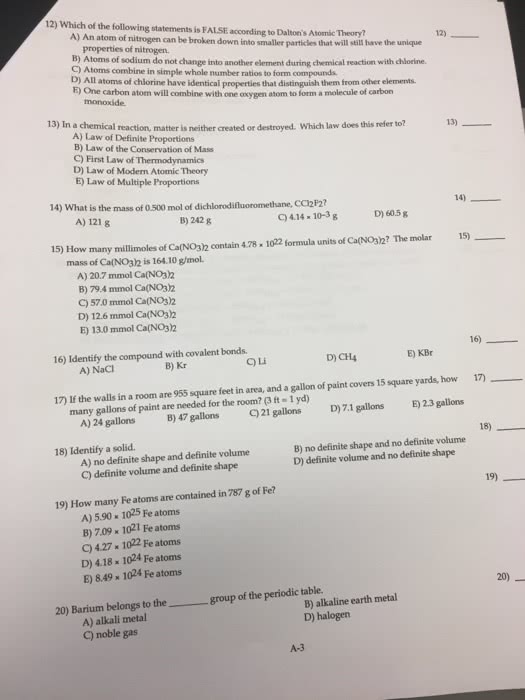CHM 113 Lecture Notes - Lecture 2: Fluorescence, Cathode Ray Tube, Subatomic Particle
Document Summary
Atomic theory of matter: atomos -- greek; indivisible particle, theory faded with aristotle/plato, reemerged with newton, john dalton developed atomic theory as persists today. Conservation of mass/matter: compounds are combination of two or more different types of elements; must have same number and type of atoms (law of. Dalton"s prediction: law of multiple proportions, elements that combine in different ways to form more than one compound must do so in ratios of whole numbers. Atomic structure: dalton had no direct evidence for existence of atoms, such evidence does exist today, microscopy of carbon monoxide atoms. The atom is composed of subatomic particles: some are charged. Important experiments: cathode ray tube, high voltage produces radiation from negative electrode (cathode, rays are invisible, but cause some materials to fluoresce (tvs are sometimes crts) Millikan oil-drop experiment: allowed for calculation of the charge and mass of a single electron. Charge = -1. 6 x 10^-19 c, mass = 9. 1 x 10^-28 g.




